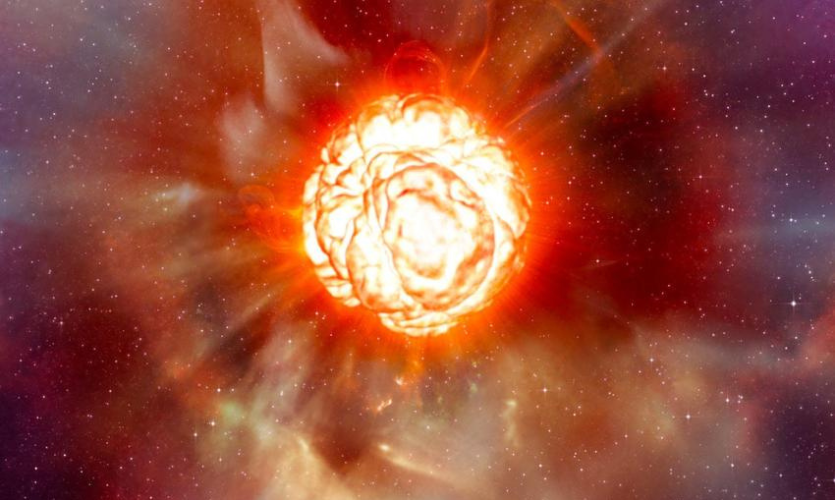Massive stars sound warning they are about to go supernova

Pictured: An artist's impression of Betelgeuse's supernova. Credit: European Southern Observatory/L. Calçada.
Astronomers have devised an ‘early warning’ system to alert to when a massive star is about to end its life in a supernova explosion.
In a new study, published in Monthly Notices of the Royal Astronomical Society, researchers have for the first time simulated how these massive stars seemingly fade away and disappear when they enter their pre-explosion phase.
Experts from the Astrophysics Research Institute at LJMU, with colleagues from the University of Montpellier, determined that massive stars in the last phase of their lives, the so-called ‘red supergiant’ phase, will suddenly become around a hundred times fainter at visible wavelengths in the few months before they die.
This dimming is caused by a sudden accumulation of material around the star, obscuring the light coming from it. When red supergiants explode, they become surrounded by a dense shell of circumstellar material.
Dr Ben Davies, of LJMU’s Astrophysics Research Institute and lead researcher, said: “The dense material almost completely obscures the star, making it 100 times fainter in the visible part of the spectrum. This means that, the day before the star explodes, you likely wouldn't be able to see it was there.”
Until now, it was not known how long it took the star to develop this material. Now, for the first time, researchers have simulated how red supergiants look when they are embedded within these pre-explosion 'cocoons'.
By searching through old telescope archives, it’s possible to find images of stars taken incidentally around a year before they exploded. The stars appear as normal in these images, meaning they cannot yet have built up this circumstellar cocoon. This suggests that the cocoon is assembled in less than a year, a blink of an eye considering the star was tens of millions of years old.
Dr Davies added: “Until now, we’ve only been able to get detailed observations of supernovae hours after they’ve already happened. With this early-warning system we can get ready to observe it in real-time, to point the world’s best telescopes at it, and watch the surface of the star getting literally ripped apart in front of our eyes.”
Find out more about the incredible work of LJMU’s Astrophysics Research Institute, where 96.9% of research was classed as world-leading or internationally excellent in the 2021 Research Excellence Framework (REF).
The research appears in ‘Explosion Imminent: the appearance of red supergiants at the point of core-collapse’, Ben Davies, Bertrand Plez and Mike Petrault, published in Monthly Notices of the Royal Astronomical Society, in press.


